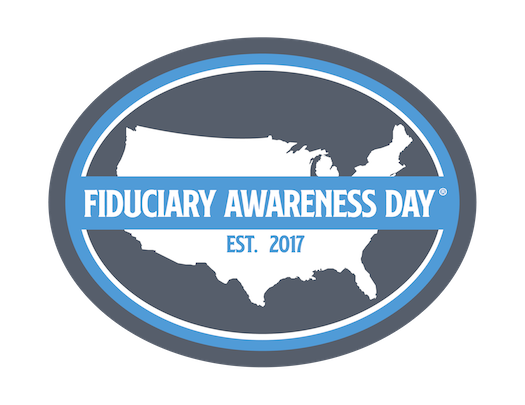Categories of ERISA Plan Fiduciaries
There are various types of DOL fiduciaries as defined in ERISA Secs. 3(16), 3(21), 3(38) and 408(g).
3(16) Plan Administrator – “I will help administer the plan.”
Business owners who sponsor retirement plans that cover common law employees are deemed to be plan fiduciaries pursuant to ERISA Sec. 3(16). An ERISA Sec. 3(16) fiduciary acts as the plan administrator and is responsible for managing the day-to-day operation of the plan. The plan sponsor, generally, is the plan administrator unless he or she appoints another entity to assume some of the plan administrative functions. Keep in mind that plan sponsors remain fiduciaries with respect to their plans, and can never fully disgorge themselves of fiduciary liability.
3(21) Limited-Scope Investment Advice Fiduciary – “I will help you invest.”
The broad definition of ERISA §3(21) applies to all plan fiduciaries, including the plan sponsor and trustee, for example; generally, anyone who has control over the plan in some respect. Under a written agreement that specifically outlines and limits his or her responsibilities with respect to the plan’s investments, a 3(21) limited-scope investment advisor provides investment advice in a fiduciary capacity in exchange for a fee or other compensation. Investment advisors are fiduciaries who must make investment recommendations to other plan fiduciaries (e.g., the plan sponsor regarding the investment line up) that are in the best interest of their clients. However, investment advisors do not have the discretion to actually make the final decision regarding the investment line-up for the plan. That is left to the plan sponsor. Consequently, the limited-scope investment advisor is liable for his or her investment recommendations, but the plan sponsor retains fiduciary responsibility and liability for the final list of investment alternatives designated under the plan.
3(38) Investment Manager – “I will invest for you.”
Historically, ERISA §3(38) was created to define the roles of multiple fund managers within a defined benefit plan. In contrast to a 3(21) investment advisor, a 3(38) investment manager has full investment discretion for the assets of a plan, generally, allowing the manager to make immediate investment decisions without the need for outside consultation or advance notice as, typically, would be the case with defined contribution plans.
Under ERISA, a plan sponsor is authorized to appoint an investment manager who will have responsibility for all investment matters, including the power to select appropriate investments, and acquire and dispose of plan assets [ERISA Section 3(38)(a) and 402(c)(3)]. The plan sponsor and all other plan fiduciaries are relieved of all fiduciary responsibility for the investment decisions made by the investment manager [ERISA Section 405(d)(1)], provided certain conditions are met.
If the plan sponsor properly appoints an ERISA 3(38) investment manager and continues to monitored such individual or entity, then the plan trustee, the party that typically has direct responsibility for managing plan assets, will not be liable for the acts or omissions of the investment manager and will not be required to invest or otherwise manage any asset of the plan which is subject to the authority of the investment manager [ERISA §405(d)(1)].
Of critical importance, the plan sponsor does have a continuing responsibility to monitor whether the investment manager is actually performing the services.
There are several requirements with respect to the engagement of an ERISA 3(38) investment manager that a plan’s named fiduciary (generally, the plan sponsor) must satisfy in order to avail itself of the fiduciary liability protection that an ERISA 3(38) investment manager can provide.
In order for an individual or entity to be considered an ERISA 3(38) investment manager, the person or entity must:
- Be formally appointed and monitored by a named fiduciary of the plan;
- Have the power to manage, acquire or dispose of any asset of the plan;
- Be a registered investment adviser (RIA) under federal or state law, a bank as defined under the Investment Advisers Act of 1940, or an insurance company that is qualified to perform investment services under the laws of more than one state; and
- Acknowledge, in writing, that it is a fiduciary with respect to the plan.
If a plan uses the services of a person that does not satisfy all of the above criteria then the appointing fiduciary is not relieved of fiduciary responsibility, and will remain liable for the acts or omissions of the investment manager [see WHITFIELD v. COHEN, 9 EBC 1739 (S.D.N.Y. 1988)]. The case of WHITFIELD v. COHEN established the elements necessary for the prudent selection of a person or entity to invest ERISA plan assets.
These considerations require the plan sponsor to:
- Evaluate the person’s qualifications including experience, education, registrations and past performance;
- Ascertain the reasonableness of fees;
- Review documents reflecting the relationship to be entered into; and
- Ensure adequate, periodic accountings in the future.
Following the proper procedure in selecting and monitoring an ERISA §3(38) investment manager is vital to ensuring the named plan fiduciary will not be liable for the acts or omissions of the investment manager.
ERISA 408g Fiduciary Adviser – “I will help plan participants invest.”
An ERISA 408(g) fiduciary is someone that is called a “fiduciary adviser.” The Pension Protection Act of 2006 (PPA-06) created a statutory prohibited transaction exemption for fiduciary advisers who deliver investment advice as part of an “eligible investment advice arrangement.” A fiduciary adviser could be a registered investment adviser, a broker-dealer, an insurance company or a trust department of a bank, and this person or entity is authorized by the plan sponsor to provide investment advice to participants through an eligible investment advice arrangement that is either based on a level-fee arrangement for the advisor, or a computer model or both. Fiduciary Advisers may also provide advice to IRA owners.
The investment advice program must meet several other requirements, including an independent audit, participant notices and disclosures, and record retention in order to qualify for the prohibited transaction exemption.
